wildlife photography
Can you learn Wildlife Photography in 4 Days?
19/09/13 17:49 Filed in: Wildlife Photography Courses

4 days wildlife photography courses might sound very short to get far within wildlife photography, but they are just the right dose to get going with the right tools to take it from their yourself.
Days on photographic safari are intense. There are two game drives per day, which make the days feel like two in one. And in between the game drives are the photography reflections on the game drive assignments. Every new wildlife photography assignment brings the attendees a step further and if it is done properly, every time a step further to independence in wildlife photography to. Your guide is not always there when you do wildlife photography. So, the main goal of the course is to get you going, enabling you to help yourself in all wildlife photography challenges and stay on track of growing as a photographer.
Of course there is guidance offered for the time after the course, for a little help, if needed, to go further yourself.
You can it and you do it.
Happy wildlife photography snapping!
Ute Sonnenberg for www.rohoyachui.com
What Wildlife Photographers need to know about Birds [in Under 100 Words]
17/09/13 11:03 Filed in: Photo Safari

Birds are the wildlife photographer’s best friends. On days that all other animals seem to have decided to hide, birds will still be there and make great photography subjects.
Learn about bird behavior before going on photographic bird safari. That will safe you lots of frustration.
Birds like the continuous clicking of the shutter. It seems to sound like a bird chirping. Talk to them.
Happy bird photo safari!
Ute Sonnenberg for www.rohoyachui.com
Your Weekly Wildlife Photography To-Do List [in Under 100 Words]
16/09/13 09:13 Filed in: Photographic Safari
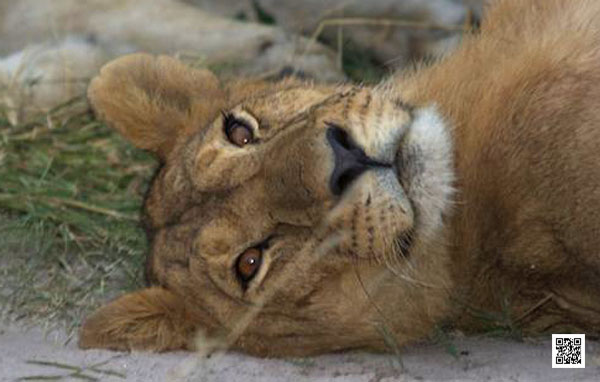
Maybe you think there is no wildlife where I live, but it is just a question of the definition of wildlife. Of course not everywhere are the Big 5, but wildlife photography can be part of every week’s photography fun.
Spot the birds around you. Also sparrows are birds and they are cute to. Photograph birds and train your patience-speed balance.
Domestic cats are pretty much the same as leopards. Try to get a top shot of a cat every week.
Practice, that dogs look happily in the lens and not away from you. Not pushing them and giving them the space is the secret.
Practice, practice, practice!
Happy wildlife snapping!
Ute Sonnenberg for www.rohoyachui.com
Take Advantage of Free eBooks on Wildlife Photography
06/09/13 09:13 Filed in: Wildlife Photography Courses

You might want to go on a photographic safari, but not necessarily doing a wildlife photography course, but you would like to prepare and get some extra guidance. Then you should utilize the available eBooks on wildlife photography.
Here some examples:
Photo Safari Essentials eGuide with tips and tricks from what camera equipment to pack to a little field guide and simple practical advice.
How tos Wildlife Photography is a selection of blog posts on wildlife photography with lots of practical tips and tricks.
Not to forget, there is also wildlife in your back garden. We don’t always need to look far from home. There might be a little hedgehog right under the bushes in your backyard.
Happy snapping!
Ute Sonnenberg for www.rohoyachui.com
What are the Components of Your Photography?
05/09/13 12:57 Filed in: Photo Tips
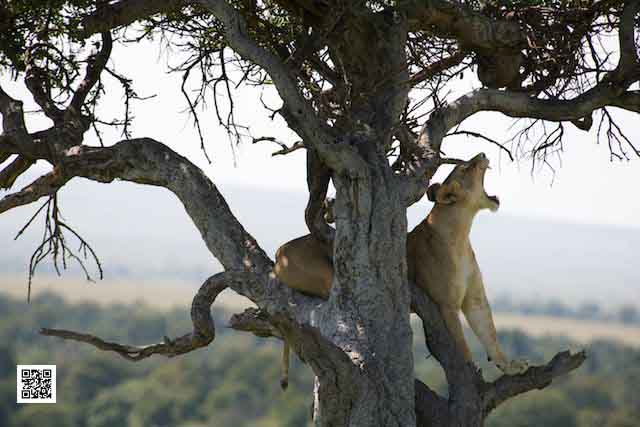
Take one of your pictures and look at it. Ask yourself the question, what made the picture.
There is the camera that captured the photo. Maybe it was a smart phone camera or a camera body with a lens or a small point and shoot camera. And there is the subject of your photo, your family, friends, a landscape, animals, wildlife, people on a street or a lovely beach. All these components are easy to identify. You can see them and touch them.
Yet there is more. The main component is you. Not only that you operate the camera, it is you who sees the composition, decides on the subject, creates compositions, connects with the light, senses an opportunity, creates opportunities and eventually captures moments that last forever.
Where you conscious about your role as main component of your photography?
Lets take it even further with an example of wildlife photography. You are on photographic safari, it is hot, the sun is burning on your head, you are following a leopard through Kruger Park, the game vehicle is going off road, you got to duck from branches, flies are circling your head and then you see the leopard, you got to focus, choose the right settings, the right angle, just the moment that the light is on it’s face and then press the shutter at the right moment.
It all depends on you and your ability to cope with any circumstances and to stay focused on what you do. Be nice for yourself, even nicer than you are for you camera equipment. You are the main component of your photography.
Happy snapping!
Ute Sonnenberg for www.rohoyachui.com
The Resources you need to Benefit from Wildlife Photography Courses
02/09/13 17:01 Filed in: Wildlife Photography Courses

First of all dig into your own images. If you did already wildlife photography, maybe from earlier holiday photo safaris, examine the images to know what you would like to learn or improve or just where you would like to go further into a subject. If you haven’t done wildlife photography before, look at your body of work and find out what your strength is, what you would like to improve and what new things you would like to learn. Your photography so far will tell you already a lot.
Then investigate where you can find what you are looking for. Look up where you can find the animals you want to photograph to be able to choose the safari destination. Then analyze the wildlife photography workshops. What do they teach, how do they teach, how big are the groups, what are the itineraries and what are the rates. Compare the right qualities when you compare prices.
Last but not least, inform about the recommended photo equipment, luggage allowances, mode of transportation, technical facilities at the safari camp and not to forget practical tips for clothes and health protection.
With that good preparation you will benefit the most form your chosen wildlife photography course. Try it.
Happy wildlife snapping!
Ute Sonnenberg for www.rohoyachui.com
Why Genuineness is the Future
30/08/13 10:11 Filed in: Photography & Art
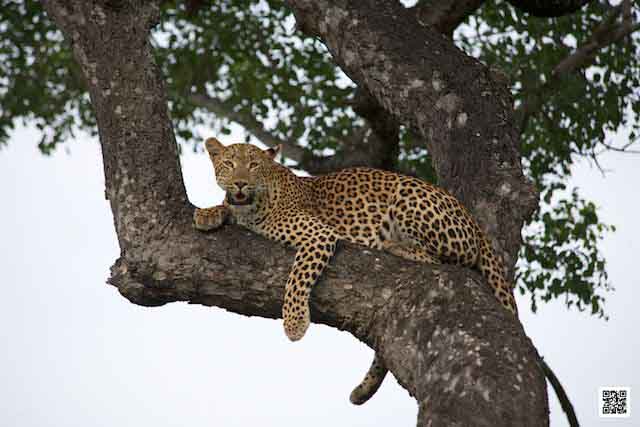
Genuineness in photography is something that was almost lost, with all the Photoshop tools and compositions and subjects copied from images taken by great photographers.
One can already predict how the coming winning World Press Photo will look like and also the next winning image of a National Geographic photo competition. They will be heavily photoshopped and the composition will be what we daily see on TV and in the magazines. It has been like that for years and it might be like that for a few more years, but boredom will fall over the images that win competitions today and people will get tired of always the same.
There are several possibilities where the trends will go, but the most likely direction will be the genuineness of a captured moment. Fashion might not fall into that category, but street photography will most likely and wildlife photography too. People who have been on photographic safaris love their images as they are, because while looking at them, they go back to the precious moment in the Masai Mara, under that tree where the leopard was sitting. They might start thinking when they are back home that they should do something to the photo before showing it online, just because everyone is doing some editing, but by heart they wouldn’t do that. And this feeling, that people just stand to their pictures and love them for what they are will create the change to more natural and genuine photography.
It will be a process and might take a while, but it seems that it has started already. Listen to how you like your photos most.
Happy snapping.
Ute Sonnenberg for www.rohoyachui.com
The 4 Pillars of Wildlife Photography Courses
28/08/13 18:48 Filed in: Wildlife Photography Courses

The 4 pillars of wildlife photography courses are what they should give the attendees and what makes them so interesting for all photography lovers.
Wildlife photography courses are inspiration, education, entertainment and collaboration.
They have the role to inspire new ways of seeing photography and wildlife and the combination of both. These photographic safaris provide tuition in photography and on wildlife. The attendees learn about animal behavior, working with the very specific light in the bush and how to cope with the often not so easy conditions when photographing in the bush.
The workshops are entertainment as well with lovely meals as picnics on the Great Plains or around the fireplace in the camp. One meets new people and enjoys a lovely time with friends. Collaboration, helping each other and working together also when being back home are a great experience. Sharing this experience creates a bond that lasts and one can reach out to photography friends when help is needed.
Although photography can be at times a solitary activity, we get better when working together and learning from each other. And such a course can be really great fun too.
Isn’t a photography blog almost the same?
Happy snapping!
Ute Sonnenberg for www.rohoyachui.com
Wildlfie Photography on Foot
16/08/13 12:56 Filed in: Wildlife Photography Courses

Pretty much all safari destinations and lodges offer bush walks as complimentary activities and there are also several walking trails available where you explore the bush on foot.
This is a very different experience and demands a lot from wildlife photographers. The moment you leave the safari vehicle and set foot on the ground, you are entering the animals’ world and you will find yourself within their hierarchy. The plains game will run away from you and when you walk into elephants or lion they might charge you.
Do bush walks only with a professional guide. Be careful with the choice of the equipment you take with you. Everything becomes very heavy quickly and you should be light footed when walking in the bush. Don’t think you need to bring your entire photo backpack in case you would need a special lens. Take one camera with a zoom lens and rather put some water and food in the backpack to stay fit.
Watch your steps and dress according to the environment. You will feel very different from being on a vehicle and that will reflect in the images. Rather do a few bush walks to get used to it. When you start feeling comfortable on foot, your focus will be again on photography, allowing great images.
Try it and you will feel the difference. Seeing a leopard on foot is a completely different experience.
Happy wildlife snapping!
Ute Sonnenberg for www.rohoyachui.com
How to Approach Animals for Photos
25/07/13 07:55 Filed in: Photo Tips

Animal lovers are happy to see a cute dog, a horse in the field or a cat in the window and most likely walk over to the animal to pet it. Some animals run off, others accept it and others love it. Photographing an animal follows pretty much the same pattern as wanting to pet an animal. The photographer with the camera enters their comfort zone and wants something from the animal, a good photo. That happens often pretty rough, although the photographer is not conscious about that. Just a quick photo and further he/she goes. But the animals are often not happy with that intrusion, look away or walk away.
The same happens on game drives on photographic safaris, team building photo safaris and wildlife photography courses. For example one day a game vehicle drove past a hyena, lying in a little puddle, enjoying the cooling water. The hyena was looking towards the road when the vehicle came, but the moment the vehicle stopped and the cameras popped out it turned away, looking in the opposite direction, very much frustrating the photographers on the vehicle. Now they started calling the hyena, trying to make her turning towards the camera, but the animal wouldn’t do that. The more the people pushed the more they drove the animal away from them. Never push an animal, it will not do what you want and if it gets too much, it will just walk off.
If you want to photograph animals and get great photos, take time and be with them. In the case of the game vehicle, just stand there and wait, make yourself comfortable and get the rush out of yourself to. After a while the animal will get used to you and feel comfortable doing its own thing. This is the moment when you get the best images. They will be images of a relaxed animal doing animal things and maybe you can even witness great animal interactions. Just don’t push them.
The same applies actually also to people. Try to push children to pose like you want and the crying will start.
Happy snapping!
Ute Sonnenberg for www.rohoyachui.com
How to know when Cats Look at You
24/07/13 09:13 Filed in: Photographic Safari

Do you have a cat at home? If yes, you will know how they can sit statue like and look at you, but actually look straight through you. Big cats in the bush do exactly the same, but mostly we think they really look at us, when they don’t.
Guests on photographic safaris, wildlife photography courses and team building photographic safaris are always happy when they get back to the camp and have a leopard portrait with the animal looking straight into the camera. And yes, these images are great, but they mostly only mean that the camera was pointing on the face of the cat, it does not mean the cat was looking in the camera.
But how do you know that they are really looking at you or your camera? You feel it. When a big cat like a lion or leopard is looking at you, a strong energy comes to you, feeling pretty intimidating and goes through and through. At that moment you might feel you want to run away, what you don’t do, because you would behave like prey. And you feel it also when looking through the viewfinder. When your eye and the eye of the cat really meet, the shutter releases almost by itself from the energy of that connecting moment.
Ever tried with your cat at home? Try and feel the difference.
Happy snapping!
Ute Sonnenberg for www.rohoyachui.com
About Patience
23/07/13 10:51 Filed in: Photo Tips
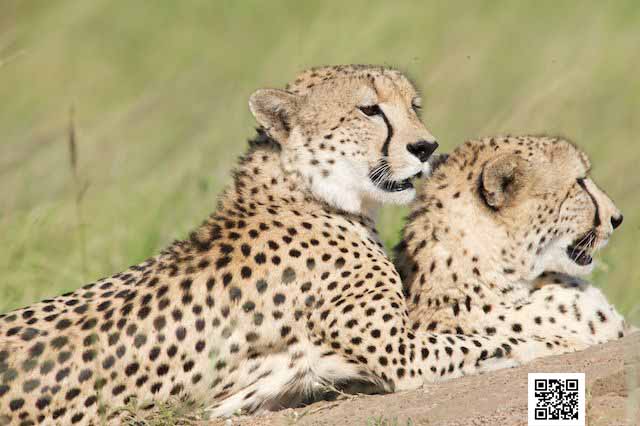
Patience is a reoccurring topic in photography; maybe because it is more difficult than learning all about aperture, shutter speed and ISO. It is probably the “empty” time we experience while waiting for the right thing to happen or just can’t get this memory card quickly enough back in its port, at least we think it has to happen quickly. And that is the next question, what is quick, half a second or 2 seconds or what?
It is a wonderful learning experience when being on photographic safaris, wildlife photography courses and team building photo safaris right in the middle of the bush, with native people living there who look at you in astonishment when you get furious over a resisting memory card. They are used to live in the moment, they walk over the Great Plains a whole day to their “shopping mall” and with the same inner peace they look into the eyes of a lion, when defending their cattle. They might not know the feeling of “empty” time, because there isn’t something like that when living in the moment. There is only one moment at the time.
When being out in the bush one learns that just by being there, but not everybody can pack up and move to the bush. Yoga and meditation are good alternatives to learn about time and patience, beneficial not only in photography, but in all ways of life.
Think about it and maybe even the stubborn memory card will give up and just do what you want it to do.
Happy snapping!
Ute Sonnenberg for www.rohoyachui.com
How to Photograph Rhinos
17/07/13 11:49 Filed in: Photo Tips

It is truly amazing to see rhinos in the wild on photographic safaris, wildlife photography courses and team building photographic safaris in South Africa, Kenya, Tanzania and Namibia. All these countries offer great sighting and especially Namibia has also the desert adapted black rhinos.
These beautiful animals are not easy to photograph. Because they are big, bulky and equipped with a greyish skin they can end up as rock like things on photographs easily. Especially in low contrast light it is hard to get a good photo.
With regards to composition, keep in mind to photograph them from an angle, just like you would do with a horse. With regards to the light, experiment with the aperture, a f-stop higher than usual might be helpful. It can also look great to photograph them backlight, although only to a certain extent.
Photographing them is challenging, yet amazing when you get the photo right.
Happy experimenting!
Ute Sonnenberg for www.rohoyachui.com
Learn from Edvard Munch
08/07/13 11:20 Filed in: Photo Tips

We probably all know Edvard Munch’s very famous painting “The Scream”. It shows his distinguished style, which makes it easily recognizable as his work. Earlier work shows that he tried different techniques. Some paintings look a lot like Monet or Van Gogh paintings, because he uses “their” style.

But then he goes beyond the styles of “others” and arrives at his own style of painting. The little dots that form the paintings of Monet become long dynamic lines in Munch’s paintings.

But what got that to do with your photography, with photographic safaris to South Africa, wildlife photography courses in Kenya and team building photographic safaris in Namibia? It tells something essential you always should keep in mind with any of the mentioned activities, find your own style, and have your own signature in photography.
When a safari vehicle with 6 people on it stands at a lion sighting with a lion lying in the grass not doing anything. One could be tempted to think that all photographs of all guests would be the same. If all guests on the vehicle have in mind the same image of a lion they saw in a magazine and photograph to match that image, their photos would pretty much look all the same. But if each of them looks at the lion in his/her own way, each photo will be different and one could easily say who photographed which image.
Find your own signature and you will find your place in photography.
Happy snapping!
Ute Sonnenberg for www.rohoyachui.com
ePhoto Book: Live
07/07/13 16:11 Filed in: Photographic Safari

Tsavo East is a huge national park in Kenya with a large elephant population. It is a popular destination for photographic safaris, wildlife photography courses and team building photographic safaris.
It is a special place with sometimes drama and sometimes joy.
View the ephoto book here.
Ute Sonnenberg for www.rohoyachui.com
Exhibit Your Photographs Online
05/07/13 10:34 Filed in: Photo Tips

As an emerging talent in photography it is not easy to find galleries exhibiting your work and with the numbers of photographers trying to get their attention, you better try it independently online.
There are great platforms like Behance and Foundfolios where you can show your art projects and Flipboard and Flowboard to present your work in a beautiful way. And don’t forget the opportunity to create ibooks and even sell them in the itunes store. All tools are available online and give you the chance to make your way into the galleries. Use them.
And for the wildlife photography lovers and photographic safari, wildlife photography course and team building photographic safari travelers are the lodges gearing up to make sure you can share your collections straight away from the bush. No gallery can beat that.
Show your work and keep creating.
Happy snapping!
Ute Sonnenberg for www.rohoyachui.com
Learn from Picasso
02/07/13 17:25 Filed in: Wildlife Photography Courses

Picasso was a master of keeping it simple, painting the essence in simple lines. His way of painting can be found in abstract lines in nature and animals.
The best way to experience that is to do a hot air balloon ride or small aircraft flight while being on a photographic safari, wildlife photography course or team building photographic safari. From your bird view position you will see patterns in the savanna or desert, structures in the landscape and roads forming lines and paintings in the grass. Also zebras are the perfect animals to photograph like abstract paintings. Look out for lines, contrasts and patterns also in other animals. Zoom in on the skin and see the painting.
Inspired? Happy painting!
Ute Sonnenberg for www.rohoyachui.com
Learn from Peter Beard
01/07/13 17:24 Filed in: Wildlife Photography Courses

Peter Beard is a great artist to learn from in wildlife photography. He went on photographic safaris when this expression didn’t even exist and nobody thought there would be one day team building photographic safaris and wildlife photography courses.
His art can be inspiration for photographers in many ways, yet the probably most inspiring is the genuine way he photographed the bush. A blur lion is no problem and neither are blurred leaves in the foreground of an image. It is never disturbing, only enhancing the expression of the image and the essence he capture with it.
Only looking at his pictures is teaching so much. Enjoy it and be inspired.
Happy snapping!
Ute Sonnenberg for www.rohoyachui.com
ePhoto Book: Light Fall
30/06/13 17:23 Filed in: Photography & Art

The light on photographic safaris, wildlife photography courses and team building photographic safaris is very different depending on the region, the time of the day and the weather, yet it is in all its appearances beautiful.
Enjoy light fall. View the ephoto book here.
Ute Sonnenberg for www.rohoyachui.com
How to Win from Yourself
14/06/13 16:59 Filed in: Photo Tips
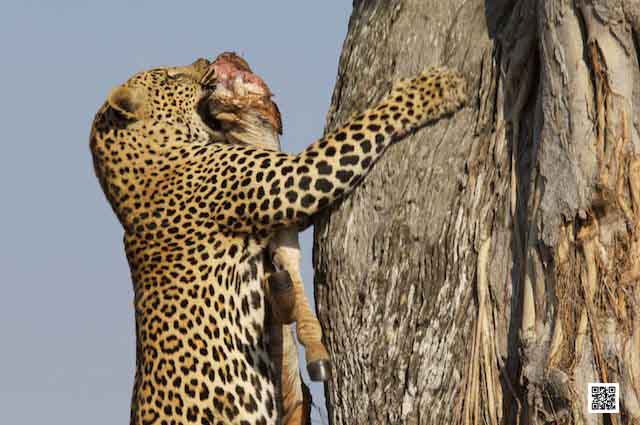
Sometimes we got this inner voice saying, lets do it next time, lets wait or not now. This voice pops up in several situations and also in photography. A standard situation for it to start talking is on game drives during photographic safaris, wildlife photography courses and team building photographic safaris.
Sitting on a game vehicle can feel like sitting on a rocking chair, not only for the rocking, but more for the feeling of dreaming away and getting to lazy to do something, even to take a photo. Everyone who had been on a game drive will know the situation that there was a wonderful photo and one was too “lazy” to make the driver stop to photograph it. It’s like being caught in a trance, with the result that the photo is gone. The photo opportunity will not come again.
The only way of doing something to get the photo is to be conscious about it and to practice. Just shout out loud when you see the photo and don’t think about what others might think. You saw it and it’s your photo. Take it.
It is actually the same when driving in a car on a motorway, with the only difference that it is often not possible to stop to take the picture. So, do it when you have the chance and definitely on safari.
Happy snapping!
Ute Sonnenberg for www.rohoyachui.com
Photographing Desert
13/06/13 16:58 Filed in: Photo Tips
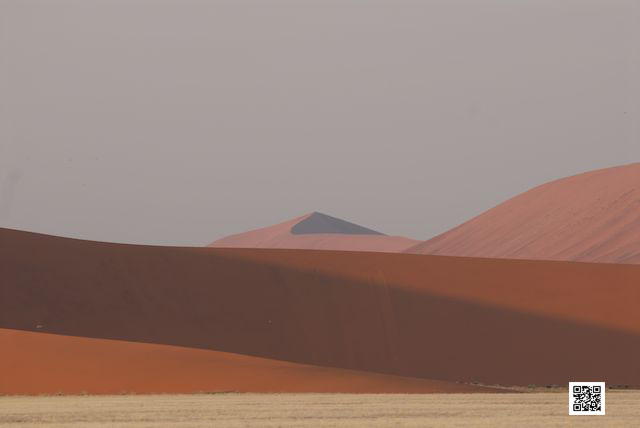
Photographing the desert is the ultimate challenge to see where one can easily think there is nothing to see. Photographic safaris, wildlife photography courses and team building photographic safaris to these places are not surprisingly the most challenging and at the same time more exciting ones.
First of all get up early. Not only the light is the best, but also the temperature is still all right. During mid-day you only want to be at the pool or sit still in the shade or well, have a nap.
Bring a macro lens, if you have. The desert offer the opportunity to photograph interesting small animals, grass, flowers, stones and as in Namibia ancient rock drawings.
Use the dramatic dimensions of the desert to put animals like a gemsbok in perspective, walking into the depth of the image.
Do, if possible a hot air balloon ride. This will offer you beautiful views on the incredible landscape of the desert. Be careful when using a wide angle lens for your landscape photography, that the distortion works out nicely.
And last but not least keep looking, although you might think there is nothing. Photographing in the desert is the art of seeing.
Happy desert snapping!
Ute Sonnenberg for www.rohoyachui.com
Do Boring Nature Photographs Exist?
12/06/13 16:57 Filed in: Wildlife Photography Courses

What would be a boring nature photograph? Pouring rain in the Serengeti or blue sky over blue ocean? I think essentially nature is never boring, we probably only fail sometimes to capture its beauty accordingly and then the image seems boring to the viewer.
Often guests on photographic safaris, wildlife photography courses and team building photographic safaris in the Masai Mara make jokes when there are no animals to see and people start taking landscape photos. “Look, he is so bored that he starts photographing landscape”. But it’s actually only a question of focus. When you are on a game drive looking out and expecting to see lion, you will not appreciate the small mongoose crossing the road. He will seem boring to you, but when you are open to see whatever the bush wants to show you, you will have an exciting game drive with lots of photographic opportunities.
The focus is probably also the key to what we see as a boring nature photograph. If we expect dramatic skies and great light, we will experience a rainy landscape as boring. But if we are just curious, we will never be bored.
Bored? Happy curious snapping?
Ute Sonnenberg for www.rohoyachui.com
ePhoto Book: Up Close
09/06/13 09:32 Filed in: Photographic Safari

These are the magical moments on photographic safaris, wildlife photography courses and team building photographic safaris when you are up close with incredible animals.
It’s like touching their souls.
Enjoy! View the ephoto book here.
Ute Sonnenberg for www.rohoyachui.com
How Good are You with Birds?
07/06/13 10:23 Filed in: Photographic Safari

Do you have a collection of empty branches in your photo file? Your are not alone.
On a regular basis the level of frustration during photographic safaris, wildlife photography courses and team building photographic safaris rises with the ambition to photograph birds. One moment they look at you and the next moment they are gone and you didn’t even had time to raise your camera. Well, there are the rare cases of birds that reconsider and just drop back onto the branch, but this is really rare. You just got be fast and you can only accomplish that by anticipating.
We are never as fast as birds, but we can learn what in their behavior shows what they will do next. Then you just press the shutter before the take off and you will capture their take off.
Got it? Practice!
Happy bird snapping!
Ute Sonnenberg for www.rohoyachui.com
How Easily are You Distracted?
06/06/13 08:54 Filed in: Wildlife Photography Courses

We probably all know situations where the noise on the street or from the neighbors makes it impossible for us to concentrate on what we are writing or creating in other ways. We just cannot focus and get more and more annoyed and distracted from what we are doing.
These distractions can also occur on photographic safaris, team building photographic safaris and wildlife photography courses. And the source of distraction can be more than people on the same vehicle and the vehicle next to you on the sighting. Think about the weather and how comfortable you feel with it. Wind can be a very disturbing element and cold and heat too. We often identify distraction caused by people easily, but it takes us longer to identify distraction by feeling uncomfortable. We might be impatient with the situation, because we are cold and we become agitated with the photo shoot and the result is not good.
Observe it yourself. Dig deeper when you feel impatient or agitated during your photography and identify the source. Often all is solved by only putting on a jacket.
Happy comfortable snapping!
Ute Sonnenberg for www.rohoyachui.com
How Patient are You?
03/06/13 08:47 Filed in: Photographic Safari

It is generally said that wildlife photography is the kind of photography where the most patience is needed. And it is definitely true that patience is essential for wildlife photography. It is always the most challenging task for the guests on photographic safaris, team building photographic safaris and wildlife photography courses. We are so used that everything goes fast. Since we use computers our time feeling has completely changed and waiting more than 2 seconds for a website to open is already too long. But wild animals are not interested in that. They don’t care that you have only one week to see the Big 5 and a Great Migration Mara River crossing and they definitely don’t care that you think you paid for it to see it. They got their own time. And it is wonderful when one can surrender to their pace, letting the rush behind and enjoying what nature has to offer. It is also only then that we see the greatest sightings and end up with fabulous photographs.
But it is not only in the bush like that. When we give ourselves the time to tune in where we are and what we want to photograph, the results are so much better and the joy too.
Be patient with yourself!
Happy snapping!
Ute Sonnenberg for www.rohoyachui.com
Does Adobe Think of Wildlife Phhotographers?
24/05/13 09:10 Filed in: Wildlife Photography Courses

Adobe has recently announced that from CS7 its software will only be available as cloud service. This is not only a financial issue, but also and access issue.
As a wildlife photographer, photographic safari guest, wildlife photography course attendee or team building photographic safari delegate you will have a big problem with Adobe software, because you are in the bush.
Although most of the lodges and camps have Internet access nowadays, the bandwidth and speed are to poor for the purpose of using Adobe creative cloud. Imagine editing an image in the cloud with a common satellite connection and ten other people want to do that at the same time. This does not work. Even checking emails will take forever in such a situation; don’t even think of image editing.
The conclusion can only be that Adobe did not think of anybody outside areas with high technology infrastructure standard, but there are huge regions in the world (even in cities) where photographers will not be able to use the cloud service, just because of the poor Internet connection. And then? I don’t know, but I hope there will be a solution to have CS on the computer or some magical improvement of Internet, but anyhow, there needs to be one.
Happy snapping and enjoying photography!
Ute Sonnenberg for www.rohoyachui.com
How to Learn form Sally Mann
17/05/13 12:54 Filed in: Wildlife Photography Courses
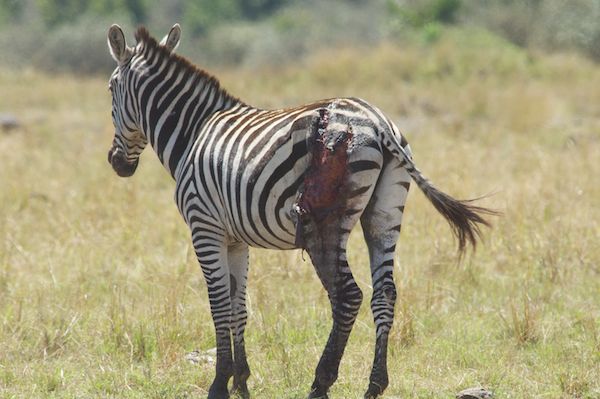
Being on photographic safaris, wildlife photography courses or team building photographic safaris means being out in the bush, in nature. That means that one sees not only the cute lion cub, but also a carcass of an animal or even a lion or leopard kill. Some will think immediately “I don’t want to see a kill or carcass” and others are keen to see the rare sighting of a kill. No matter how you feel about in advance, when suddenly witnessing it is a very special experience, not only as a person, but also as a photographer.
Photographing a kill or a carcass asks for dignity, yet showing the whole truth of the moment. Sally Mann is an American photographer who does that in an artistic and careful way as her images show. It is like the photographer becomes responsible to capture the essence of the moment and to tell its story. The animal is not gone, it lives on in the images and it will not be forgotten.
See more of Sally Mann’s work on her website.
Ute Sonnenberg for www.rohoyachui.com
How to Learn from Sid Kaplan
16/05/13 13:06 Filed in: Wildlife Photography Courses

Photographing in the Masai Mara in Kenya can be challenging with regards to the intense bright light between the golden hours in the morning and the late afternoon. Feedback from people on photographic safaris, during wildlife photography courses and team building photographic safaris often goes about frustration with washed out looking images. The colors are washed out and it looks over exposed. There are a few ways to get better results, but it is also possible to play with the natural tendency to over exposed images in this environment.
Sid Kaplan, the legendary master printer and photographer uses over exposure (and under exposure) pretty often in his images and creates great effects. He dares to play with it and to let it be dominant in the image. Yet there is always contrast and that might be the secret.
The bright day light in the Masai Mara tends to let everything look over exposed, but there is always some shade or a dark tree trunk that provide contrast. No play with the focus point and/or metering and create Sid Kaplan inspired photographs of wildlife and fabulous landscapes.
Inspired? Happy snapping!
Ute Sonnenberg for www.rohoyachui.com
Learn Perspectives from Cédric Gerbehaye
15/05/13 09:07 Filed in: Wildlife Photography Courses

An amazing thing to play with during photographic safaris in the Masai Mara, wildlife photography courses and team building photographic safaris is landscape photography by using wide-angle lenses. Ideally are clouds on a blue sky and a dirt road leading to the horizon. They are the helpers in creating perspective, giving the image depth. Yet also here, training the eye is possibly the most important thing. Photographer Cédric Gerbehaye can be a great example to learn from and to train the eye by looking at his images. He is a master in black and white photography and even portraits of people show depth and perspective.
Inspired? Start looking for perspectives in your own garden, in the park or in the street and create mesmerizing images.
Become yourself an example for others to learn from.
Happy snapping!
Ute Sonnenberg for www.rohoyachui.com
Wildlife Photography: Appreciate Over Casted Days
06/05/13 12:24 Filed in: Wildlife Photography Courses

When we do wildlife photography we always wish to have the perfect light, the early morning golden light or at least sun and no clouds. But of course we don’t get it always and have to deal with all sorts of light when we are out on photographic safaris in the Masai Mara or at other amazing destination.
Especially during wildlife photography courses or team building photographic safaris people hope for sun and good weather. But actually the opposite is good for a great wildlife photography course. Changing and challenging light are great moments to learn and to produce despite the situation fabulous pictures. Over casted days offer even a better light than bright sunny days, outside the golden hours. The diffuse light of over casted days creates richer color saturation and black and white images turn out really fantastic.
Try it. When there is a day that you think this is really terrible, take your camera and photograph black and white (or turn the images later into black and white). You might really love the results.
Happy snapping!
Ute Sonnenberg for www.rohoyachui.com
Henri Cartier-Bresson on Wildlife Photography?
01/05/13 15:32 Filed in: Wildlife Photography Courses
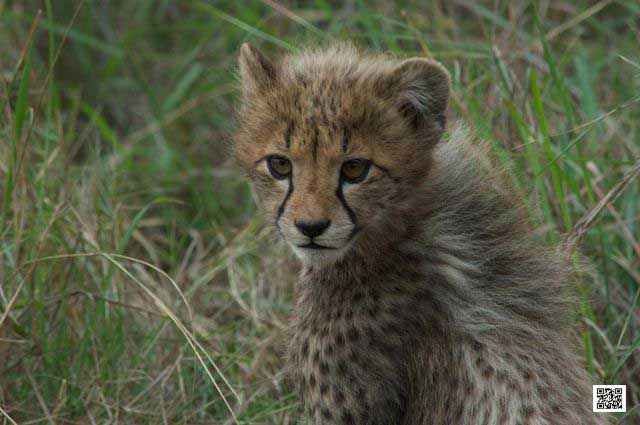
“For me photography was a mean of drawing and that’s all. Immediate sketch, done with intuition and you can’t correct it. If you have to correct it, it’s a next picture. “ (Henri Cartier-Bresson, The Decisive Moment)
Henri Cartier-Bresson is considered to be the father of modern photojournalism, yet photojournalism has a lot in common with wildlife photography. When you are on a photographic safari in the Masai Mara in Kenya with a wildlife photography course assignment photographing movement and you luckily come across a hunting lion, do you think you can ask the lion to do it again, because you are not happy with the photo? Of course not, the moment is gone, just like in photojournalism. Your next picture captures or draws a new moment and just be always ready for the moments that might come.
Wildlife photography done during team building photographic safaris shows even how an entire group of people can align during a few game drives to be in some kind of same flow of immediate sketches telling the story of a day of wildlife photography and at the same time the story of the people, the photographers.
The sketches are the photos and they show the subject and the photographer at that very moment, ready or not for the hunting lion or the man on the street making a certain gesture.
“Life is once, forever” (Henri Cartier-Bresson) also in wildlife photography.
Enjoy the moment.
Happy snapping!
Ute Sonnenberg for www.rohoyachui.com
How Wildlife Photography can Benefit from Ansel Adams
30/04/13 08:36 Filed in: Wildlife Photography Courses | Photography & Art

Outstanding contrast and clarity are attributes connected to Ansel Adam’s photography. It characterized his work from the very beginning, although at this time the “Pictoralism” method was popular. And isn’t it contrast that fascinates us in photography, literarily as light contrast and as “contrast subjects”?
Wildlife photography courses can use Ansel Adams’ work to teach seeing and photographing contrast in nature, even in a rock, like he did. On a photographic safari with wildlife photography course or team building photographic safari people often struggle to photograph “rock like” animals like rhinos and elephants. Their body shape and skin color make it not easy to get good photographs, photographs with contrast, depth and a well proportioned body. From Ansel Adams wildlife photographers can learn what angle to use and with which light to photograph to get a nice photograph. Only look at his pictures from Yosemite, the monolith or El Capitan (photograph below). He was a master in creating depth in something big and bulky with an even color.
By studying his work, wildlife photography can improve and rhinos, elephants and thought boring landscapes become fascinating mesmerizing photographs. Try it with simple things at home that resist to be photographed nicely and then take it to wildlife photography.
Learn and benefit from a master. Happy snapping!
Ute Sonnenberg for www.rohoyachui.com
How Wildlife Photography can be Pulitzer Winning
24/04/13 16:17 Filed in: Wildlife Photography Courses | Photography & Art

Do you remember any wildlife photograph winning a Pulitzer Prize? I don’t. The Pulitzer Prizes honor excellence in journalism and the arts including photography, but photography as part of photojournalism. Images from photographic safaris or wildlife photography courses are not the ones that win the prize unless the safari becomes news or wildlife conservation is the subject. And the last is actually a very interesting thought to follow.
It will need more than a photographic safari to the Masai Mara to make a documentary about conservation. One needs to do already a lot of pre-production work to understand the topic, read a lot, talk to people in conservation and focus on one specific issue to deepen it out in a photo documentary. This will be the base for the photographic safari to capture the images and to tell the story of this specific problem or success.
Practicing this kind of wildlife photography documentaries in wildlife photography courses can be very nice, inspiring and may lead one day to a Pulitzer Prize. Even team building photo safaris can benefit from this approach, although there will most likely not the prize be the goal. Anyhow, never think never. Powerful wildlife photography telling a powerful story can have the potential to be Pulitzer Prize winning, although it will have to compete with what happens elsewhere in the world. It’s worth thinking about it and one can also start small, growing towards bigger prizes.
Happy snapping and growing!
Ute Sonnenberg for www.rohoyachui.com
How Steve McCurry's Photography can be Part of Wildlife Photography Courses
23/04/13 11:36 Filed in: Wildlife Photography Courses

Steve McCurry is well known and often awarded for his powerful documentary photography from conflict areas all over the world, like for example the famous photograph of an Afghan girl below.
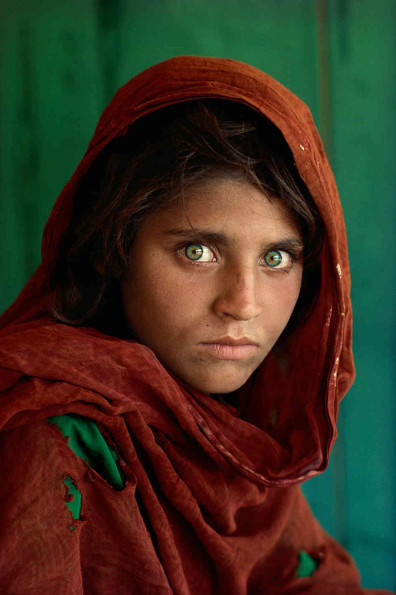
McCurry has often said that he tries to immerse himself into the culture of the location he is visiting, and rather than immediately head out with his camera, he prefers to watch and wait, saying “If you wait, people will forget your camera and the soul will drift up into view.” (via Phoblographer)
And this is exactly what makes the difference in photography, also in wildlife photography, wait and watch. On photographic safaris, during team building photo safaris and during wildlife photography courses in the Masai Mara, Serengeti, Kruger National Park, the Okavango Delta and elsewhere, this very same principle applies. When we are out on a wildlife photography course the probably most important lesson is to practice patience and not try to force anything. There are people who call the animals from the vehicle or make noises or some even google lion roaring on their iPad to play it at the lion sighting to make the lion do something. They found it to boring just sitting and waiting. By doing any of these, the animals will not show their soul, they will not trust and do their natural thing and the photographer will not get the powerful images he/she is wanting. Only when spending time with the animals they begin to relax and do their normal thing, trust is built and by just being with them the greatest photographic opportunities emerge. The wildlife photographer got to tune into the environment, just like Steve McCurry does on other locations and wait, giving the animals the space to be and show how beautiful they are.
Try it at home with cats and dogs. They will appreciate it and you will get great pictures.
Ute Sonnenberg for www.rohoyachui.com
How Wildlife Photographers can Learn from William Eggleston
22/04/13 10:43 Filed in: Photography & Art | Photographic Safari Tips
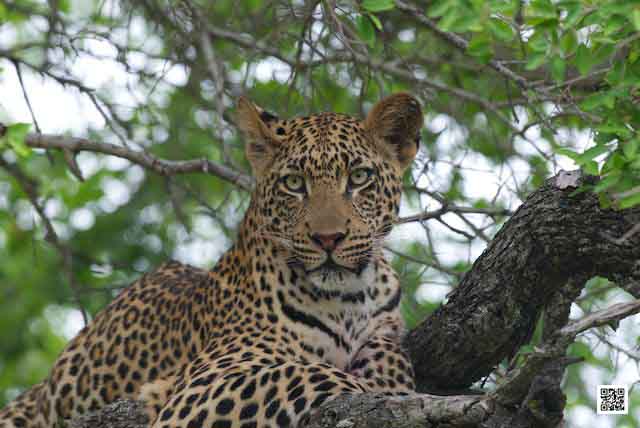
“I was in Oxford, Mississippi for a few days and I was driving out to Holly Springs on a back road, stopping here and there. It was the time of year when the landscape wasn't yet green. I left the car and walked into the dead leaves off the road. It was one of those occasions when there was no picture there. It seemed like nothing, but of course there was something for someone out there. I started forcing myself to take pictures of the earth, where it had been eroded thirty or forty feet from the road. There were a few weeds. I began to realize that soon I was taking some pretty good pictures, so I went further into the woods and up a little hill, and got well into an entire roll of film.” (from a conversation of William Eggleston with Mark Holborn, afterward from The Democratic Forest)
This might sound familiar for wildlife photographers, being on a photographic safari or wildlife photography course lets say in the Masai Mara in Kenya, driving the entire morning over the Great Plains and seeing “nothing”. As Eggleston’s story tells, there is always something to photograph, one only needs to start seeing. And well, we are probably sometimes a bit spoilt, expecting the perfect light on incredible wildlife interaction right in front of us and yes, that happens, but there is so much more to see and photograph by just starting seeing. There is landscape, there are beetles, leaves, flowers, grass, soil, rocks, roads and so much more and not only in the bush, start looking out for it in your own garden and hometown. Do not wait for the obvious great shot, start seeing the great photograph in everything and a whole new world will open to a new dimension in photography. Sounds a bit vague? Try it and see the results. During our team building photo safaris we often experience the most amazing surprises when people who never thought of themselves of being able to express something in photos come up with the most beautiful results and they also might have thought at one stage, that this all sounds a bit vague.
Go and try and be surprised by your photography.
Ute Sonnenberg for www.rohoyachui.com
Photographic Safari Destination Ngorongoro Crater
19/04/13 10:24 Filed in: Photo Safari | Photographic safari destinations

The Ngorongoro Crater is a place not to be missed when being on photographic safari in Tanzania. In 1979 the Ngorongoro Crater became a UNESCO World Heritage Site and offers breathtaking views from its rim and a great variety of wildlife living on the crater floor. The photographic safari game drives decent every day 620 meters (2,000 feet) into the crater to cruise the entire day on the crater floor. It would take too much time to go up to the lodge in between, so one stays in there for the day. But this is not difficult. The crater floor covers 260 square kilometers (100 square miles) and lots of wildlife lives there. It is an ideal place for wildlife photography courses and team building photo safaris with the opportunity to have picnic breakfast and lunch during the day game drive.
The best place to stay at the Ngorongoro Crater is in one of the three lodges at the rim. From there the view is just beautiful and completely mesmerizing. These lodges cost a bit more, but it’s worth it. I would recommend staying not longer than for 2 or 3 nights, unless you have a special interest in the area and its wildlife. It is very busy at the Ngorongoro Crater and off road driving is not allowed (because of the many vehicles). That means the animals can be far away and only big zoom lenses will allow good wildlife photography. But it’s definitely worth going there. It’s very impressing.
Dress warm. The elevation of the crater floor is about 1,800 meters (5,900 feet) and the crater rim about 2,400 meters. It can be very chilly and windy. Bring a fleece sweater!
Ready to go? Do, if you can.
Ute Sonnenberg for www.rohoyachui.com
Wildlife Paintings of Wildlife Photographs & vice versa
18/04/13 12:52 Filed in: Photography & Art

When wildlife painters like David Shepherd work on their paintings they use photographs to help them paint animals correctly and to recall certain moments and light. Many use photographs other people took on their photographic safaris and others go on photographic safari themselves. It would be interesting to have painters on wildlife photography courses to see how they work and how they use the camera as a tool. Do they photograph already compositions they paint later or do they capture mostly animals with the idea of being able to paint them correctly? Probably both, yet there could be inspiration from painters to photographers and the other way around.
But there are also photographers that recreate paintings in photographs like Richard Tuschman did with Edward Hopper’s paintings (image below).

What is more difficult, painting a photograph or recreating a painting with a photo? It might all boil down to the skills of the photographer and painter, but I cannot see how to recreate a Van Gogh with a photo or a Picasso. So I think its more difficult to create the photo.
Anyhow, it is a nice thing to try during a painting or photography course with lots of fun and probably funny results.
Try it? Have fun!
Ute Sonnenberg for www.rohoyachui.com
Wildlife Photography Storytelling
17/04/13 18:16 Filed in: Photo Safari | Photography & Art

Taking a picture is not just taking a picture. The picture tells the story of the moment and that applies to all pictures, the birthday party pictures, the family shots and the leopard photos from the photographic safari in South Africa.
Lets focus on the leopard for the moment. During our wildlife photography courses we try to see and photograph the Big 5 and choose the game reserves and National Parks accordingly. But still it can be hard to see leopards and that makes us going to the Sabi Sand in South Africa to make sure we see them.
You might have seen many leopard photographs and think they look quite similar with a leopard lying down in its typical majestic pose or lying on a tree branch and you might think they do not look much storytelling, but they do. It is not easy to photograph a leopard and capturing its entire beauty. The angle, the light, the look, all needs to be right to tell the story and often a leopard photo tells the story of a very lucky photographer, pressing the shutter at just the right moment. Even the blurred images and miss-composed ones are telling the story of the excitement of the moment and the difficult circumstances. Wildlife photography storytelling are not only the spectacular images of a kill or a chase. In every image is a story that makes us look at them.
Pressing the shutter is telling a story and makes photographers storytellers.
Happy storytelling!
Ute Sonnenberg for www.rohoyachui.com
On Photo Safari: Animal Behavior
23/03/13 10:44 Filed in: Photo Safari

Photo safaris are of course for the purpose of seeing animals and photographing them, but that can be challenging at times, when the animals just are who they are and the photographer is too late to capture the action. This can be improved by a faster camera, a better trained photographer, yet more important by the photographer having knowledge about animal behavior.
During photographic safaris with photography courses this is an important part of the course. In order to do wildlife photography one needs to know the animals or at least have somebody on the vehicle who does. For example birds. Photographing a bird’s take off is the moment of capturing motion, beauty and dynamic, yet it happens very fast and the photo is often one of an empty branch or an empty piece of sky. This changes when the photographer knows that a bird ducks down for a moment before it takes off, like a skydiver before jumping out of the plane. Then you only need to start shooting the moment the bird ducks down and you will have the take off.
Another example is lion movement. Lion tend to rest during the day and get active when it cools down in the late afternoon. But it can be very tempting to be impatient and not wait when being at a lion sighting and they are all not moving an inch and it becomes very boring. Stay with them when you see that they start grooming and yawning. This is a clear sign that they will get up soon and that is when the action comes and movement happens.
In case this sounds all new don’t worry. There are rangers on the vehicles who know the animals. Learn from them about animal behavior and your wildlife photography will improve and stress to get it right will subside.
Happy snapping and wildlife watching!
Ute Sonnenberg for www.rohoyachui.com
On Photo Safari: The Photographer
16/02/13 09:30 Filed in: Photo Safari
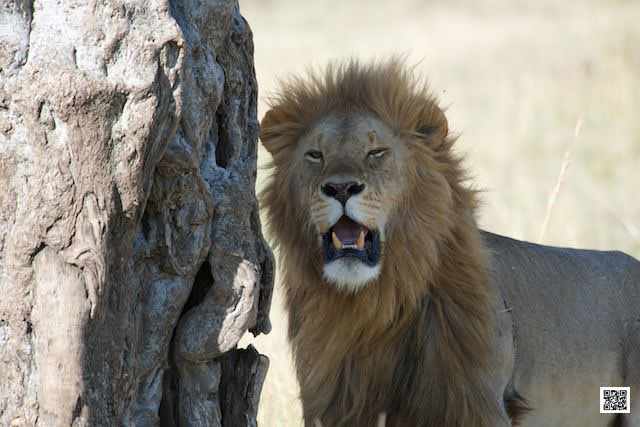
There is lots of attention for camera gear when being on a photographic safari, what lens to bring what settings to use, but there is an essential factor that is often forgotten, the photographer and I don’t mean the ability of the photographer to operate the camera, its something more subtle.
Photo safaris take the guests out on open 4x4 jeeps (strongly recommended to go to places where they are doing it like that and with only 6 people on the vehicle). That means there are two people in a row and if you are lucky you got a row for yourself. Experience from wildlife photography courses taught that it proofed to be hard to get the photographer moving in his/her row, really moving not only leaning over. Wildlife can be on either side of the vehicle or move to the other side of the vehicle and in order to get the best shots the photographer should move too, but often is glued to the spot.
How is this possible? Think of yourself how often you were standing on a spot photographing a scene and getting annoyed that people were walking somewhere on the side or other obstacles suddenly turned up. Did you think of moving yourself to a different spot to get the good shot? One reason to not move is the composition we see just there, but there is more, especially in the bush or other challenging environments. We are feeling comfortable and we like to keep it like that, moving seems then uncomfortable and we resist, stick to where we are and don’t move.
But this is just the point, one got to be willing to move/change in order to get great results and discover different perspectives. Photography is also a physical activity and means physical efforts for the photographer, although its tempting to forget about that, but its crucial.
Keep moving! Keep having fun!
Ute Sonnenberg for www.rohoyachui.com
eBook: How to's Wildlife Photography
13/01/13 23:39 Filed in: Photo Safari | Photo Tips
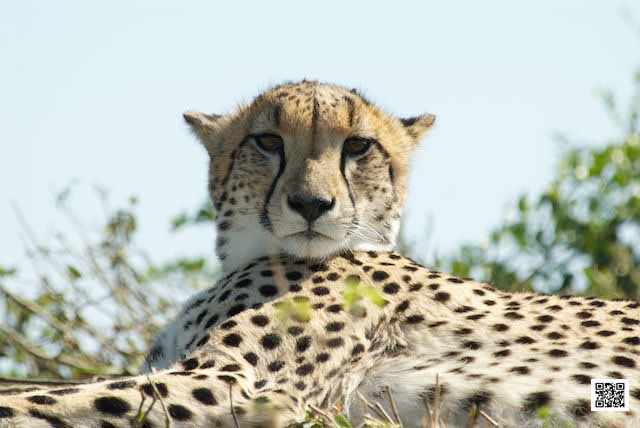
Throughout this blog, posts are scattered with wildlife photography subjects, yet not in a very handy way for the reader to pick them together to read easily.
For those who would like to have them all easy to read in one place, here is the ebook How to’s Wildlife Photography with a selection of blog posts on the subject.
View and download the ebook here.
Happy reading.
Ute Sonnenberg for www.rohoyachui.com
On Photo Safari: The 3D-Tracking Autofocus Challenge
12/01/13 12:56 Filed in: Photo Safari

Wildlife photography is different and the last wildlife photography course in the Northern Kruger Park in South Africa made that clear once again.
Wildlife photography demands a lot of efforts from the photographer. Not only the environment is demanding, also the photographic subjects and the light. Some features of a camera that were included in high end devises do not work in the bush. They are mainly made for other purposes and one needs to be conscious about that.
For example the 3D-tracking autofocus setting, tested during the mentioned photography course in Kruger Park on a Nikon D800E. The focus picks up the wrong things, does not recognize the head/face of an animal and gets confused with the light. The photographer has to chose the focus point, otherwise what he wants in focus is not in focus. So, be careful where you use what autofocus setting and be conscious that the photographer got to do efforts to get it like he/she wants it.
Practice the different settings when you have time to play and not when you want it to work. That will make you happier with the results.
Happy snapping!
Ute Sonnenberg for www.rohoyachui.com
2012 National Geographic Photo Contest: Cynical?
08/01/13 14:08 Filed in: Photography & Art

Photo awards have proved many times that they are questionable in their motives and results and the just announced winner of the “nature” section of the National Geographic 2012 Photo Contest is only another example how cynical awards have become.
The winning photo is a photo of a tiger, taken in a zoo. One can just imagine what kind of wildlife photography that is in the comfortable security of a zoo with an ice-cream stall conveniently at hand. Not a photographer out in the bush where it has 40 degrees Celsius, covered in dust and sweat, facing possible danger behind every corner and trying to be patient to get that one special shot. No, conveniently with a trolley for the equipment and a foldable chair and umbrella to wait if necessary comfortably for a while, probably being very annoyed by other visitors flocking around the same cage or enclosure.
Is this the new photo safari wildlife photography experience honored by the leading wildlife photography magazine of the world?
I hope not. There is nothing like the real thing and a photo shows that.
Read more on the subject from PetaPixel here.
Ute Sonnenberg for www.rohoyachui.com